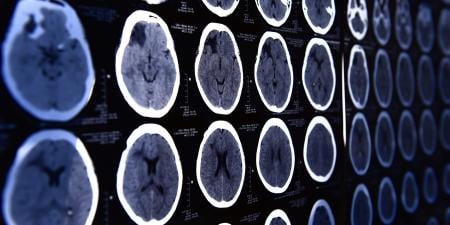What do ethics have to do with radiology? This is a question that colleagues and even attending physicians asked me in medical school when I spoke of my interest in medical ethics and my plan to become a radiologist. "Become an internist instead," they said, "so you can really deal with ethical issues." As a radiologist, I'm not spending most of my day directly interacting with patients, but there is a patient behind every image, whether digital or film, and no physician, regardless of specialty, can ignore the principles of medical ethics in everyday practice.
Radiologists have been called the "doctor's doctor." This is an unfortunate label because we have duties not only to referring physicians, but also to patients. As the primary readers of medical images, we provide advice as well as interpretations. But those services are for the benefit of the patient. Informing the primary physician of a critical or unexpected result is a means to an end—the best care for the patient.
When a radiologist receives an order or request from another physician to perform an imaging study or procedure on a patient, he or she becomes part of the patient's medical team. Clear and timely communication among all members of the team is essential to ensuring optimal use of medical imaging for the benefit of the patient.
The Radiologist's Consultant Role
Each time an imaging study is ordered, radiologists must ask whether exposure to radiation is warranted. Imaging should be recommended only when it is in the patient's best interest; that is, it should not be performed to avoid litigation, for financial gain, to reach a quota, when the outcome clearly will not affect the treatment plan, or because the patient's family demands it. With few exceptions, imaging studies should follow clinical evaluation, not replace it or substitute for patient-physician communication [1].
When they receive requests for imaging studies that are not indicated for a particular patient, not the optimal exam for a particular indication, or actually harmful to the patient, radiologists must make their concerns known to the referring physician. Physicians order inappropriate or potentially harmful studies for many reasons, including the emergent nature of the situation, their lack of knowledge about state-of-the-art imaging, or, perhaps, their incomplete understanding of radiation exposure and its risk in vulnerable groups such as children and pregnant women.
When the study is needed for an emergent condition, the radiologist must be in close communication with the referring physician. This is essential, for example, in CT angiography for an unstable patient with renal insufficiency and a high clinical probability of aortic dissection. Patients with compromised renal function are at high risk of nephrotoxicity from intravenous contrast. Nevertheless CT angiography may be the most likely way to save the patient's life in certain situations. But there may be other instances in which patients with chest pain and renal insufficiency do not need a CT angiogram, and for whom the risks outweigh the benefits.
Unfortunately, in nonemergent cases it is sometimes easier and faster to comply with the request than to pursue discussions about its appropriateness. Denying a request or advising against it can lead the patient to question his or her physician's judgment, thus eroding the patient-physician relationship, and could antagonize the referring physician, resulting in a lack of cooperation among the patient's caregivers.
Occasionally a referring physician insists a study be done regardless of the radiologist's concerns. When patient-care team members know and trust one another, direct communication can usually resolve the misunderstanding; it often takes only a phone call to the primary physician to clarify the patient's condition and the reason behind the request or to convey the rationale for suggesting a different study. To this end, radiologists use the evidence-based guidelines found in the American College of Radiology (ACR) Appropriateness Criteria [2]. These criteria can assist in identifying or confirming the appropriate imaging study for certain indications and specific symptoms and findings. For all physicians who make decisions on imaging, the appropriateness criteria are an important resource for enhancing quality of care and ensuring the safe and efficacious use of imaging for patients.
Selecting the Best Imaging Modality
The radiologist's goal is to obtain the information that our referring colleagues seek, while using the modality that limits radiation exposure to a level that is "as low as reasonably achievable" (ALARA). Sometimes the use of alternative technologies such as MRI and ultrasound instead of CT and X-rays yield more or better information, while avoiding the use of ionizing radiation entirely.
Medical imaging studies have risen dramatically since the 1980s, particularly the use of CT imaging, which has increased sevenfold from 2.8 million annual examinations in 1981, to 20 million in 1995 [3]. Its growth continues, with an estimated 65 million scans performed in the United States in 2007 [4]. Although CT imaging comprises only 11 percent of all diagnostic radiology studies and procedures, the modality accounts for more than two-thirds of the radiation dose delivered to patients in the U.S. [5]. A single CT or nuclear medicine study can have an effective dose of 10 to 25 millisieverts (mSv) [6], compared to the estimated annual background radiation (natural or commonly produced artificial radiation) dose of 3 mSv per year. A single chest CT may have an effective dose of 8 mSv, which is the equivalent of 400 chest X-rays [7]. Given that many patients have multiple CT studies, the total estimated exposure for a patient, even in one hospitalization, could exceed 50 mSv. A study of Japanese atomic bomb survivors showed a statistically significant increase in cancer risk with radiation dose estimates over 50 mSv [6]. Radiation from medical imaging, while providing significant benefit to many patients, may also confer a slight increase in risk of cancer [8,9]. Thus it is vital that radiologists agree with the necessity and appropriateness of a scan.
Although safe dosage is emphasized in radiology residency training, many nonradiologists order and, at times, even interpret imaging studies, so it is vital that the training of all medical students and residents include education in radiology safety. Patients are rarely given information about the radiation exposure from a CT scan or information regarding risks and benefits [10]. This may be partly because physicians are not aware of, or do not understand, the radiation dose and its effect. Ordering or performing a study without an appreciation of the potential risks of the radiation exposure is akin to ordering any other procedure or medication without knowing its risks.
Radiologists, specifically, are charged with the task of keeping radiation dose as low as reasonably possible for patients, but the responsibility falls on all physicians, particularly as nonradiologists become more involved in the business of imaging centers, thus potentially influencing their ordering patterns.
In the meantime, careful consideration of radiation exposure when ordering imaging studies, comprehensive accreditation of all imaging facilities, and use of appropriateness ratings for imaging studies may assist the medical profession in applying our remarkable diagnostic resources in a way that is safe, effective, and most beneficial for our patients.
References
- Schreiber MH, Winslade WJ. Rights, roles, and relationships in radiology. Radiology. 1987;163(1):269-270.
-
American College of Radiology. ACR Appropriateness Criteria. Accessed October 11, 2007.
- Brenner D, Elliston C, Hall E, Berdon W. Estimated risks of radiation-induced fatal cancer from pediatric CT. AJR Am J Roentgenol. 2001;176(2):289-296.
- Frush DP, Applegate K. Computed tomography and radiation: understanding the issues. J Am Coll Radiol. 2004;1(2):113-119.
- Kalra MK, Maher MM, Toth TL, et al. Strategies for CT radiation dose optimization. Radiology. 2004;230(3):619-628.
- Amis EA Jr, Butler PF, Applegate KE. American College of Radiology white paper on radiation dose in medicine. J Am Coll Radiol. 2007;4(5):272-284.
- Picano E. Sustainability of medical imaging. BMJ. 2004;328(7439):578-580.
- Berrington de Gonzalez A, Darby S. Risk of cancer from diagnostic x-rays: estimates for the US and 14 other countries. Lancet. 2004;363(9406):345-351.
- Einstein AJ, Henzlova MJ, Rajagopalan S. Estimating risk of cancer associated with radiation exposure from 64-slice computed tomography coronary angiography. JAMA. 2007;298(3):317-323.
- Lee CI, Haims AH, Monico EP, Brink JA, Forman HP. Diagnostic CT scans: assessment of patient, physician, and radiologist awareness of radiation dose and possible risks. Radiology. 2004;231(2):393-398.



